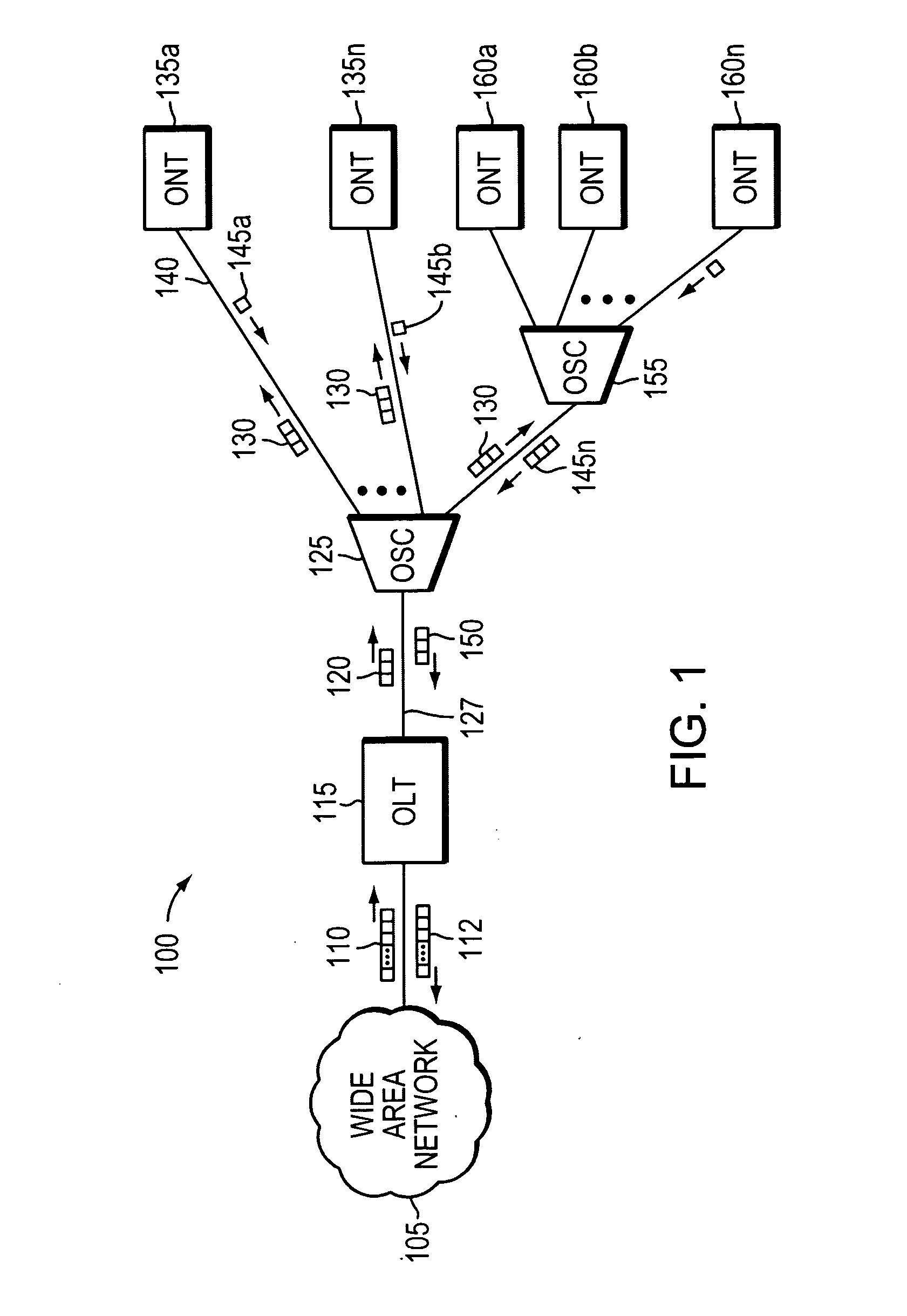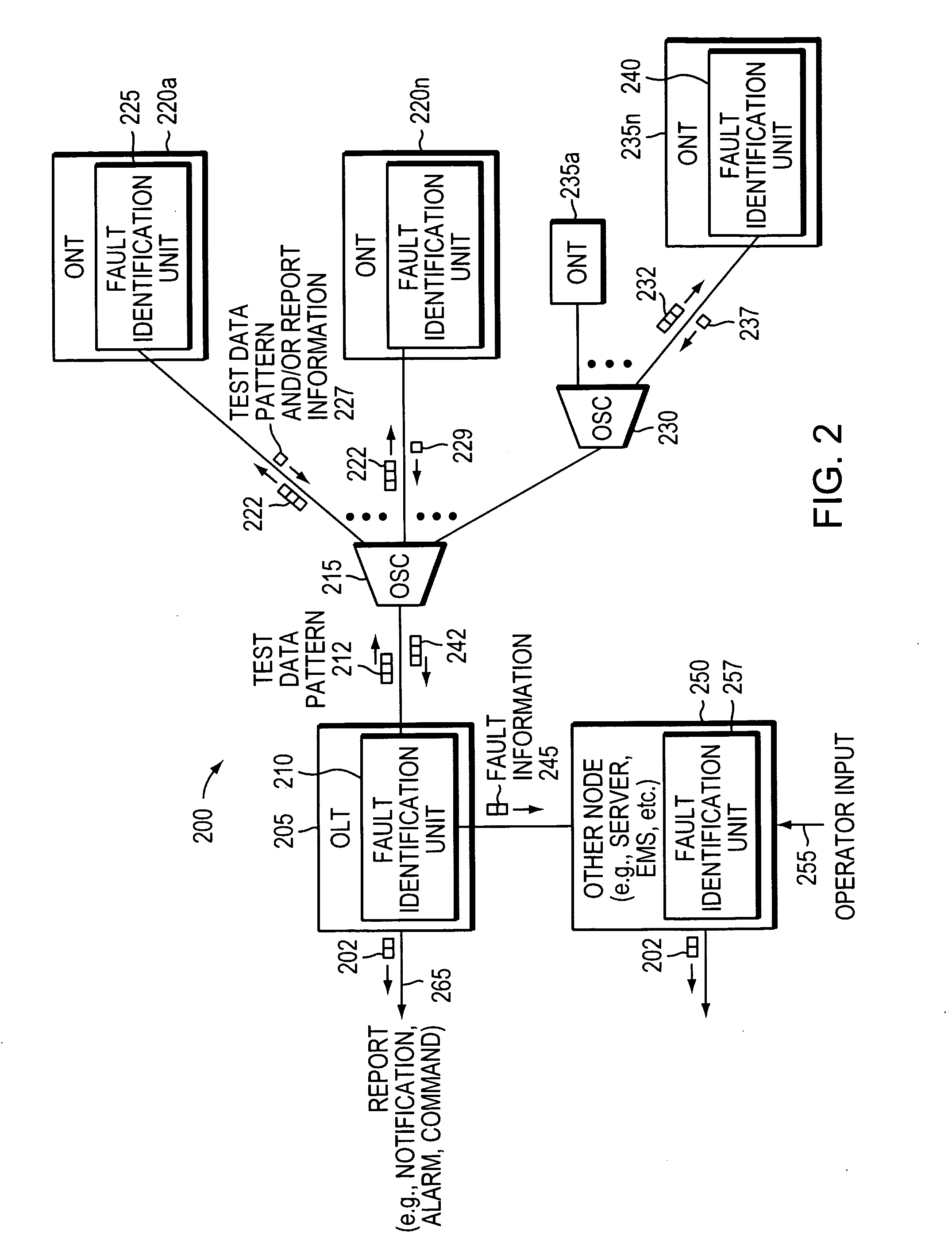Method and apparatus for identifying faults in a passive optical network
a passive optical network and fault identification technology, applied in the direction of electrical equipment, transmission monitoring, transmission monitoring/testing/fault measurement system, etc., can solve problems such as bursty, rogue ont condition, and failure to identify faults
- Summary
- Abstract
- Description
- Claims
- Application Information
AI Technical Summary
Problems solved by technology
Method used
Image
Examples
Embodiment Construction
[0014]A description of example embodiments of the invention follows.
[0015]FIG. 1 is a network diagram of a passive optical network (PON) 100 illustrating aspects of an example embodiment of the invention. The PON 100 includes an optical line terminal (OLT) 115, an optical splitter / combiner (OSC) 125, and at least one optical network unit (ONT) 135a-n, 160a-n. In other network embodiments, optical network units (ONUs) (not shown) may be in optical communication with multiple ONT(s) 135a-n, 160a-n directly in electrical communication with end user equipment, such as routers, telephones, home security systems, and so forth (not shown). As presented herein, ONU's are typically found at a curb and ONT(s) extend to a premise, but both generally behave the same with respect to embodiments of this invention. Data communications 110 may be transmitted to the OLT 115 from a wide area network (WAN) 105. “Data” as used herein refers to voice, video, analog, or digital data.
[0016]Communication o...
PUM
 Login to View More
Login to View More Abstract
Description
Claims
Application Information
 Login to View More
Login to View More - R&D
- Intellectual Property
- Life Sciences
- Materials
- Tech Scout
- Unparalleled Data Quality
- Higher Quality Content
- 60% Fewer Hallucinations
Browse by: Latest US Patents, China's latest patents, Technical Efficacy Thesaurus, Application Domain, Technology Topic, Popular Technical Reports.
© 2025 PatSnap. All rights reserved.Legal|Privacy policy|Modern Slavery Act Transparency Statement|Sitemap|About US| Contact US: help@patsnap.com



